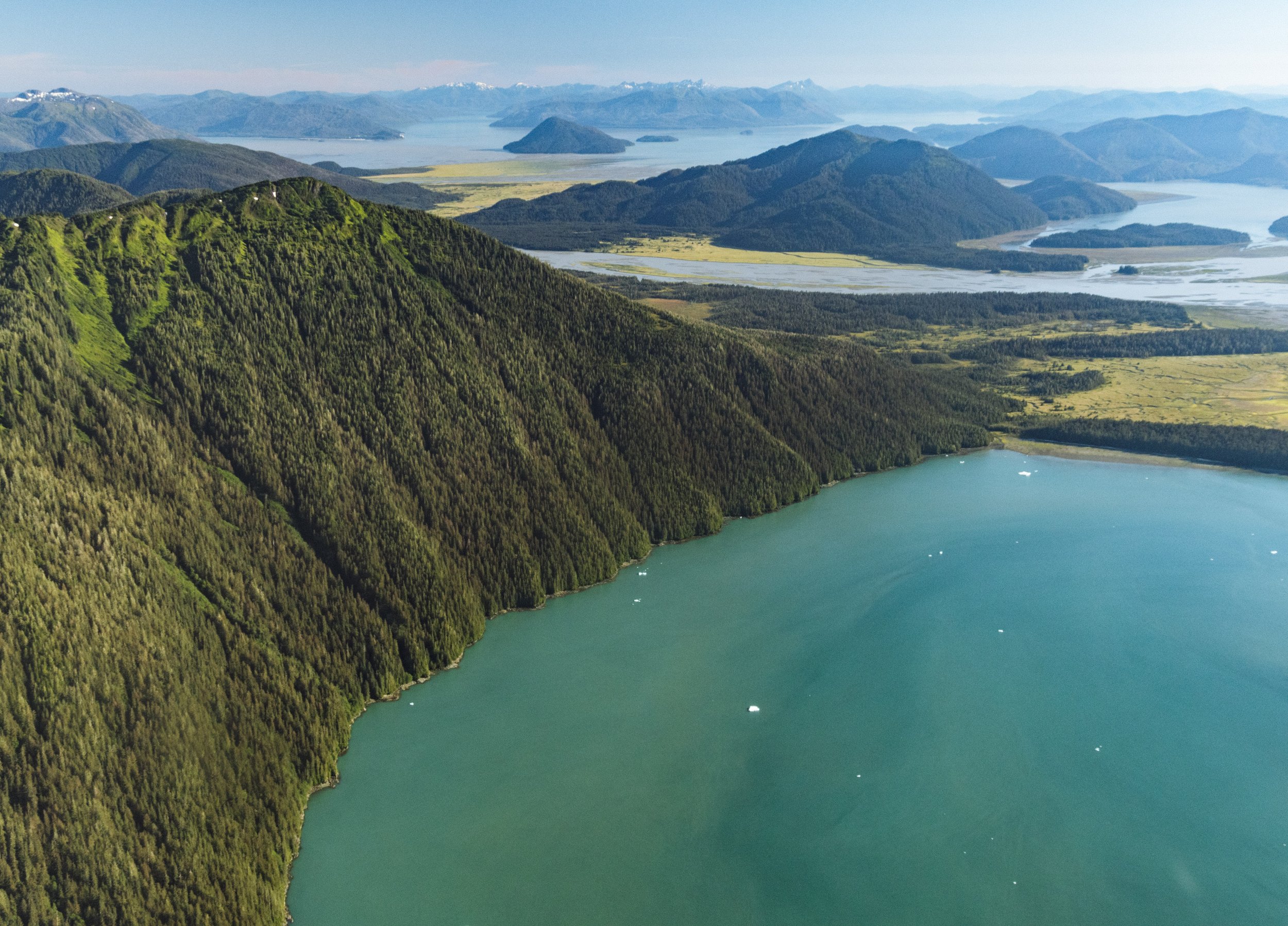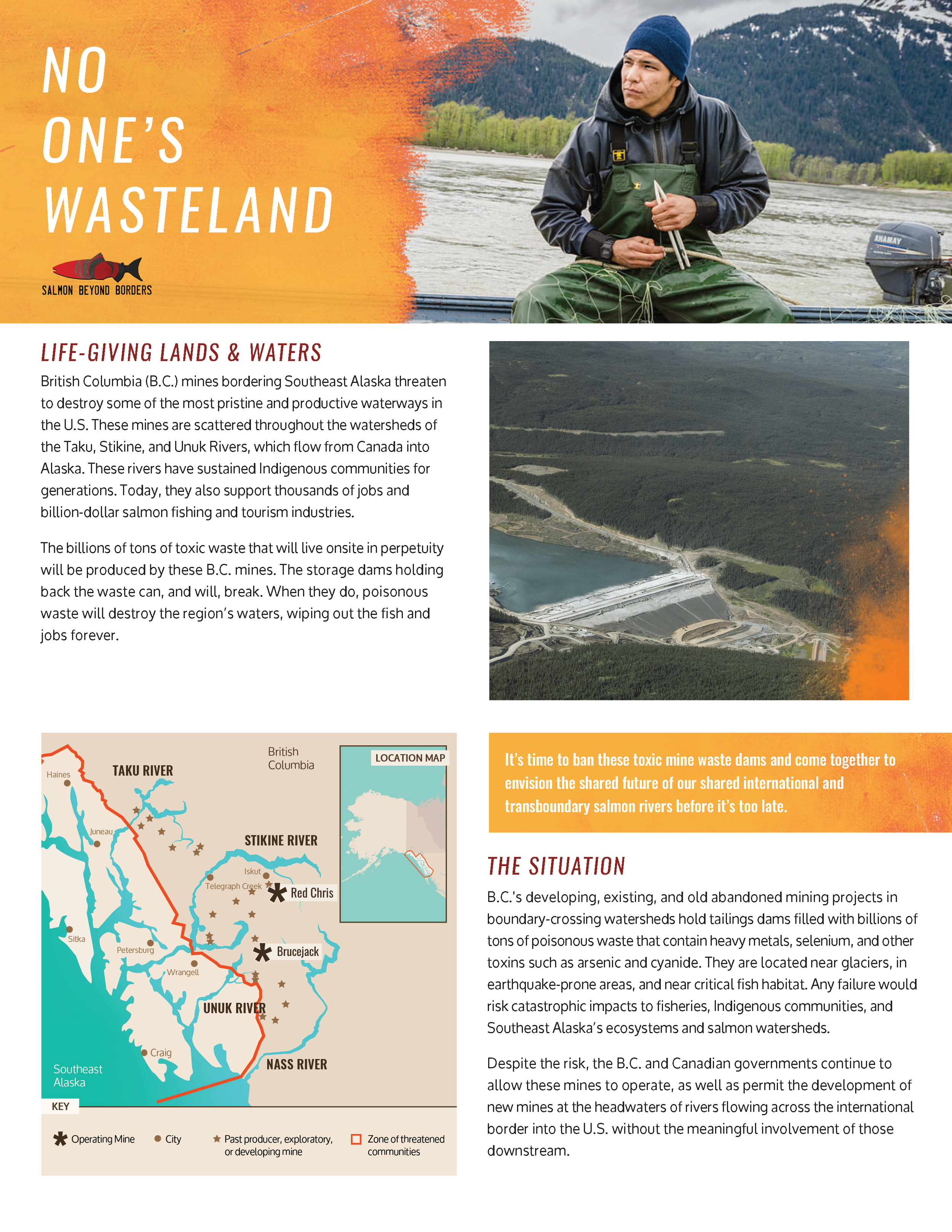
Learn More
Photo by Colin Arisman
The Taku, Stikine, and Unuk Rivers are central to life, culture, commerce, sustenance, and ways of life in this region - and home to several Indigenous Nations, including the Tlingit and the Tahltan - linking about 80,000 people in many communities on both sides of the U.S.-Canada border.
Shared Rivers Divided by a Political Border
Our transboundary rivers have been stewarded by Indigenous peoples since time immemorial and are subject to the U.S.-Canada Boundary Waters Treaty of 1909.
Photo by Troy Moth
Local Economies and a way of life at risk
-
Salmon fishing - including commercial, sport and subsistence fishing - supports more than 7,000 jobs in Southeast Alaska and pumps $1 billion into the regional economy every year. Similarly, salmon fishing contributes over 3000 jobs and adds $200 million to the B.C. economy. Pollution flowing across the border into our shared salmon rivers could jeopardize this critically important industry.
-
Recreational and salmon tourism in B.C. employs over 6000 people and brings in $440 million to the regional economy. Southeast Alaska’s tourism industry provides an estimated 10,000 jobs and injects an estimated $1 billion annually to the regional economy. This blue-chip industry could be tarnished by B.C.'s upstream mine development.
The myth behind BC Mining
Almost 20% of all three AK-B.C. transboundary watersheds are staked with B.C. mineral claims. B.C. markets these mines of the "Golden Triangle" as important for the “clean energy transition.” In reality, the vast majority of mining companies are targeting mostly gold.
Photo by Garth Lenz
Click below to view the fact sheet

Photo by Colin Arisman




